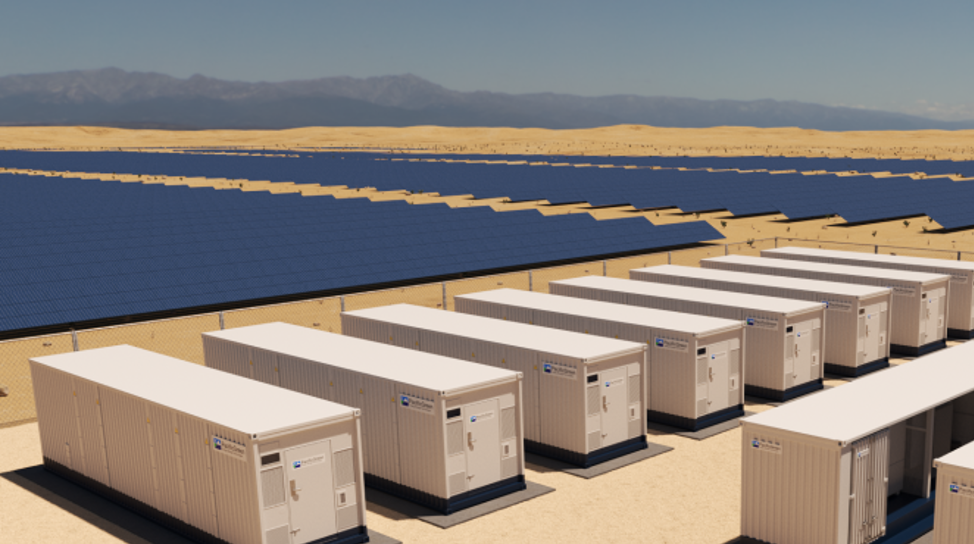The High Price Of Offshore Wind: A Shift In Industry Sentiment

Table of Contents
Soaring Material and Labor Costs
The dramatic increase in the price of raw materials and skilled labor is a major contributor to the high cost of offshore wind. Constructing these massive turbines requires significant quantities of steel, concrete, and specialized equipment. The global supply chain disruptions of recent years have exacerbated this issue, leading to material shortages and inflated prices. This is further complicated by the increasing demand for skilled labor in the offshore wind industry, pushing wages higher and leading to project delays.
- Supply chain disruptions: The COVID-19 pandemic and geopolitical instability have created significant bottlenecks in the supply chain, impacting the availability and cost of crucial materials like steel and specialized components for wind turbine construction. This unpredictability makes accurate project budgeting extremely challenging.
- Increased demand for skilled labor: The rapid growth of the offshore wind sector has created a significant demand for skilled workers, including engineers, technicians, and specialized marine crews. This high demand has driven up wages, adding considerable expense to project budgets.
- Inflationary pressures: Global inflation has significantly impacted the cost of all construction materials and labor, adding further pressure to already high offshore wind project budgets. This makes securing project financing even more difficult.
- Geopolitical instability: The war in Ukraine, for example, has had a profound impact on global energy markets and material sourcing. The disruption of supply chains and increased energy prices are directly influencing the cost of offshore wind development.
Challenges in Project Financing and Permitting
Securing financing for large-scale offshore wind projects is a complex and time-consuming process. The sheer scale of these projects requires significant investment, and securing that investment is often fraught with challenges. Furthermore, the lengthy permitting processes involved in obtaining necessary approvals from multiple regulatory bodies contribute to project delays and increased costs.
- Lengthy permitting processes: Navigating environmental impact assessments, obtaining necessary licenses and permits from various governmental agencies and stakeholder consultations can take years, adding significant costs and delaying project timelines. Streamlining these processes is crucial.
- Increased scrutiny of environmental impact assessments: Growing public awareness of environmental concerns has led to more rigorous environmental impact assessments, adding to the time and cost associated with project approvals. Balancing environmental protection with the need for renewable energy is a key challenge.
- Competition for investment capital: The renewable energy sector is attracting significant investment, leading to fierce competition for capital among various projects. Offshore wind projects, with their inherently higher upfront costs, can struggle to compete for funding.
- Rising interest rates: Increased interest rates make borrowing more expensive, adding to the overall cost of offshore wind projects and potentially discouraging investment.
Technological Hurdles and Innovation Costs
The ongoing need for technological advancements to improve the efficiency and reduce the costs of offshore wind energy presents another significant challenge. Larger, more efficient turbines are crucial for reducing the overall cost of energy produced, but developing and deploying these technologies requires substantial investment in research and development.
- Research and development costs for larger, more efficient turbines: Developing next-generation turbines that can withstand harsh marine conditions and generate more power is expensive, requiring significant investment in research and development. This cost is passed on to the final energy price.
- Investment in advanced grid infrastructure: Integrating the significant amounts of energy generated by offshore wind farms into the existing grid requires substantial investment in new infrastructure, which adds to the overall project cost.
- The challenge of operating and maintaining wind turbines in harsh marine environments: The harsh conditions at sea necessitate robust and durable designs, specialized maintenance procedures, and sophisticated monitoring systems, all adding to operational costs.
- Exploring new technologies like floating offshore wind for deeper waters: Expanding offshore wind capacity to deeper waters requires innovative technologies like floating offshore wind platforms, which currently represent a higher capital expenditure but could unlock vast potential resources.
The Impact on Energy Transition Goals
The high price of offshore wind poses a significant challenge to national and international renewable energy targets. The increased cost could lead to delays in achieving carbon reduction goals, potentially hindering efforts to mitigate climate change. This necessitates a critical re-evaluation of strategies and the exploration of alternative approaches.
- Potential delays in achieving carbon reduction goals: The high cost of offshore wind could limit its deployment and slow down the transition to cleaner energy sources, delaying the achievement of ambitious carbon reduction targets.
- Increased pressure on governments to provide subsidies and incentives: To make offshore wind projects economically viable, governments may be pressured to provide substantial subsidies and incentives, potentially straining public finances.
- The need for a more cost-effective approach to offshore wind development: Industry stakeholders and policymakers need to explore ways to reduce the cost of offshore wind energy through technological innovation, streamlined regulations, and efficient project management.
- Exploration of alternative renewable energy sources to supplement offshore wind: Diversifying the renewable energy portfolio by investing in other renewable energy sources, such as solar and onshore wind, can help to mitigate the reliance on potentially costly offshore wind projects.
Conclusion
The high price of offshore wind is a multifaceted challenge impacting the industry's trajectory. Soaring material costs, complex permitting processes, technological hurdles, and the overall economic climate all contribute to the rising expenses associated with these projects. This is causing a significant shift in industry sentiment, prompting a critical re-evaluation of strategies and the need for innovative solutions. Addressing the high price of offshore wind is crucial for the success of the global energy transition. Further research, technological innovation, and streamlined regulatory processes are essential to make offshore wind a truly viable and cost-effective solution for a sustainable energy future. We need to find ways to lower the cost of offshore wind while maintaining its environmental benefits. Let's work towards a more affordable and accessible future powered by offshore wind energy.

Featured Posts
-
 Lotto Results Check The Latest Lotto Lotto Plus 1 And Lotto Plus 2 Numbers
May 03, 2025
Lotto Results Check The Latest Lotto Lotto Plus 1 And Lotto Plus 2 Numbers
May 03, 2025 -
 Fortnite Cowboy Bebop Bundle Faye Valentine And Spike Spiegel Skin Price Check
May 03, 2025
Fortnite Cowboy Bebop Bundle Faye Valentine And Spike Spiegel Skin Price Check
May 03, 2025 -
 Financing Options For A 270 M Wh Battery Energy Storage System Bess In Belgium
May 03, 2025
Financing Options For A 270 M Wh Battery Energy Storage System Bess In Belgium
May 03, 2025 -
 Conservative Party Divisions Deepen The Reform Uk Challenge
May 03, 2025
Conservative Party Divisions Deepen The Reform Uk Challenge
May 03, 2025 -
 Workplace Productivity And The Importance Of Mental Health Support
May 03, 2025
Workplace Productivity And The Importance Of Mental Health Support
May 03, 2025
